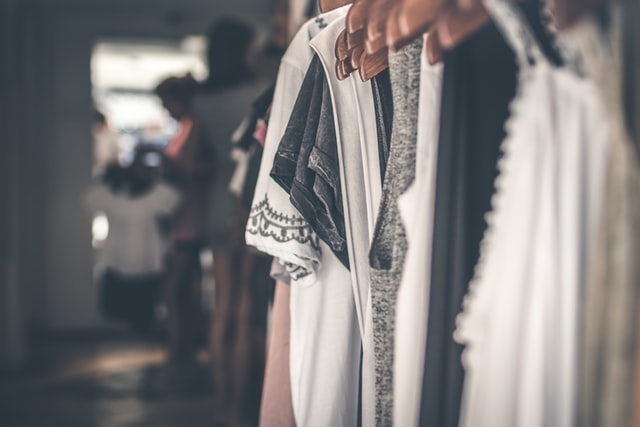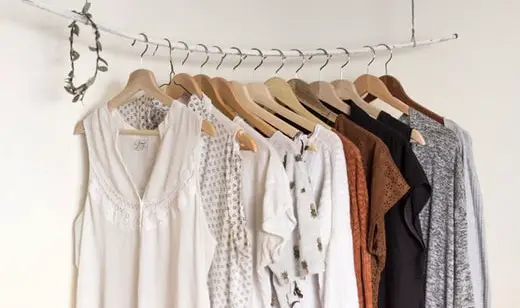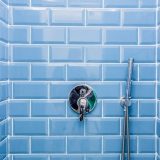How To Prevent Mold In Closet: 13 Ways To Keep Your Closet Mold-Free!

Welcome to my article about how to prevent mold in closets! Let’s start with a quick intro about why you should care if there is mold in your closet to begin with.
How To Prevent Mold In Closets: Introduction
No one wants mold in their home. In addition to being unsightly, it produces allergens that can cause symptoms like sneezing, runny nose, red eyes and rashes.
It can also cause attacks in people that have asthma.
Many people think that mold appears in bathrooms only, but it can show up in other areas of the home including closets.
It can enter the home through doors and windows, through vents in heating and cooling systems and it can be tracked in on clothing.
Once the spores get into your spaces, they grow quickly, particularly in humid spaces.
While there are ways to get rid of mold, it is best to prevent it from growing in the first place.
This article will review the steps you need to take to keep mold out of closets.
How Do You Know If You Have Mold?
Mold is most detectable by scent. If you smell a musty odor, it’s possible that you have mold.
If you suspect there is mold in your closet, you may not see it. It may be hiding behind your clothing or other items.
If this is the case, you should take everything out and look for signs of mold. It will appear as black or green patches on the walls and shelves.
How to Get Rid of Mold in Closets
If you find you have mold in your closets, there are steps you can take to get rid of it.
You must:
- Make sure the room is well ventilated by opening windows and circulating fans.
- Cover your furnishings and belongings or remove them from the room.
- Use a drop cloth to protect your flooring or carpeting.
- Wear protective gear to avoid getting mold on your skin, in your eyes or into your respiratory system.
- Spray the mold with distilled white vinegar. Let the vinegar sit on the problem areas for a half hour, then scrub them with a brush.
- Rinse the area with water. Then spray it with vinegar again to prevent regrowth.
- Let everything dry before putting your clothing and items back in the closet.
If your clothes and items have mold on them, make sure you wash them in the washing machine or thoroughly by hand before putting them back in the closet.
You can also brush off the mold outside and then wash the clothing using regular detergent.
How to Prevent Mold in Closets

While it is possible to eliminate mold once it has grown, it’s better to prevent it from growing in the first place.
Here are some tips that will help you keep your closet mold free.
Keep Your Clothing and Other Items Clean and Dry: Mold feeds on dirt and moisture. To prevent it from forming, clean your clothing regularly.
Make sure it is completely dry before putting it back in the closet.
Remove Dry Cleaning Bags: Dry cleaning bags may seem like they will keep your clothing protected from the elements.
However, the polyethylene composition of the plastic traps humidity making mold likely to grow. Therefore, you are best off removing them as soon as possible.
Keep Your Items off the Floor: Closet floors can provide additional storage space. Unfortunately, items on the floor are prone to get wet if a plumbing leak occurs.
If they cannot be fully dried, they will attract mold. It is best to move any objects sitting on the floor to a shelf.
Keep Closet Doors Closed: If you keep your closet doors closed, it will prevent humid air from getting in so mold will be less likely to appear.
Clean Closets Regularly: It is advisable to clean closets every few months. Take everything out and dust the shelves and vacuum.
Let fresh air circulate through the closet for several hours after it’s clean. This will reduce dirt that mold feeds on.
Pay Attention to Musty Smells: if you detect a musty smell, don’t ignore it. If it’s caused by mold, your problem will only get worse.
If you search your closet and don’t find any signs of mold but the odor persists, call in an expert. There may be mold behind your walls that you are not able to see.
Set Out Silica Packs: Silica packs absorb the moisture that mold feeds on.
Leave the Light On: The heat from a low wattage light bulb will make the air in the closet less humid. It is recommended to leave your lights on 24/7 for optimal mold prevention.
Trade Out Wood Shelves for Wire Shelves: Wood shelves are more likely to absorb moisture than wire shelves.
The wire option will reduce humidity while allowing air in the space to flow more freely.
Replace Your Doors with Louvered Doors: Louvered doors have horizontal slats that allow air to circulate and prohibit mold growth.
Use a dehumidifier: A dehumidifier will eliminate moisture from the air. If your closet is large enough, you may be able to use a plug-in electric dehumidifier to minimize moisture in your space.
If the closet is small and does not have an outlet, you can use a mini rechargeable version.
Disinfect Your Walls: It’s a good idea to disinfect your walls on a regular basis whether you see signs of mold or not.
To do this, start by removing all items from your closet. Then fill a spray bottle with a solution that’s one part bleach and three parts water.
Allow the solution to soak in. Then scrub the area and wipe it with a clean cloth.
Clean Outdoor Gear After Use: Items from the outdoors can easily bring mold into your home. Make sure yours are clean and thoroughly dry before storing them.
This includes umbrellas, jackets, boots, sporting goods and any other type of outerwear or items used for outdoor activities.
How To Prevent Mold In Closets: Conclusion
It’s important to remove mold immediately after you notice it, and take action to prevent it developing again. I hope this article has given you some tips and tricks to combat the mold in your closet!
Here are some other articles you may also enjoy:
How To Clean Sludge From Top Loader Washing Machine
Crystals For The Garden

About The Author: Hi, I’m Jessica. I’m a Mom of 2 and I love DIY hacks, home decor ideas and non-toxic cleaning tips. I created this website to share my knowledge with a community of like-minded people who love simple, easy and safe ways to keep their home clean and inspiring. I hope you enjoy!








